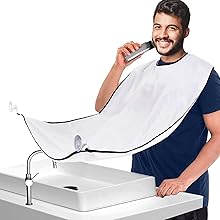
N.B. rehab centre makes inexpensive device for ALS patients to use computers, phones
CBC
For someone with a serious neurological disorder like amyotrophic lateral sclerosis, being able to use a cellphone or tablet can make a big difference in life.
But it can become impossible as ALS progresses, and a person's ability to move decreases.
It was something Marla Calder was seeing in the ALS clinic at the Stan Cassidy Rehabilitation Centre in Fredericton.
"You and I might use a standard mouse or a standard keyboard or something like that to access those technologies," the occupational therapist said. "They might not have that, so they may only have, like, a small movement in a finger, or they might have the ability to, you know, move their eyebrows up."
Calder wanted to find a way to change that, given how important those devices can be for someone with limited mobility.
"If you think about how often we use our devices in the run of a day, I mean, it lets us, or allows us, to connect with our world," she said.
"And that might be family and friends from texting to, you know, reaching out if they need something. It could be business. It could be similar interest groups, general information — people access health information, online banking."
"So that, if they have trouble getting out and about, you can do a lot of that right from your device."
And these days, it also allows people to control their environment.
"So if you have control of your cellphone or your tablet, most of those will all interface with smart home products, so you can control the stuff in your house," Calder said.
There were devices on the market that could help, but Calder said they could be expensive, in one case as much as $20,000.
And that would make it nearly impossible for many people to own one.
So Calder asked Rachelle Bernier, the Stan Cassidy Centre's rehab engineer, to try to come up with an affordable solution.
Bernier was enthusiastic about the challenge.





















 Run 3 Space | Play Space Running Game
Run 3 Space | Play Space Running Game Traffic Jam 3D | Online Racing Game
Traffic Jam 3D | Online Racing Game Duck Hunt | Play Old Classic Game
Duck Hunt | Play Old Classic Game











